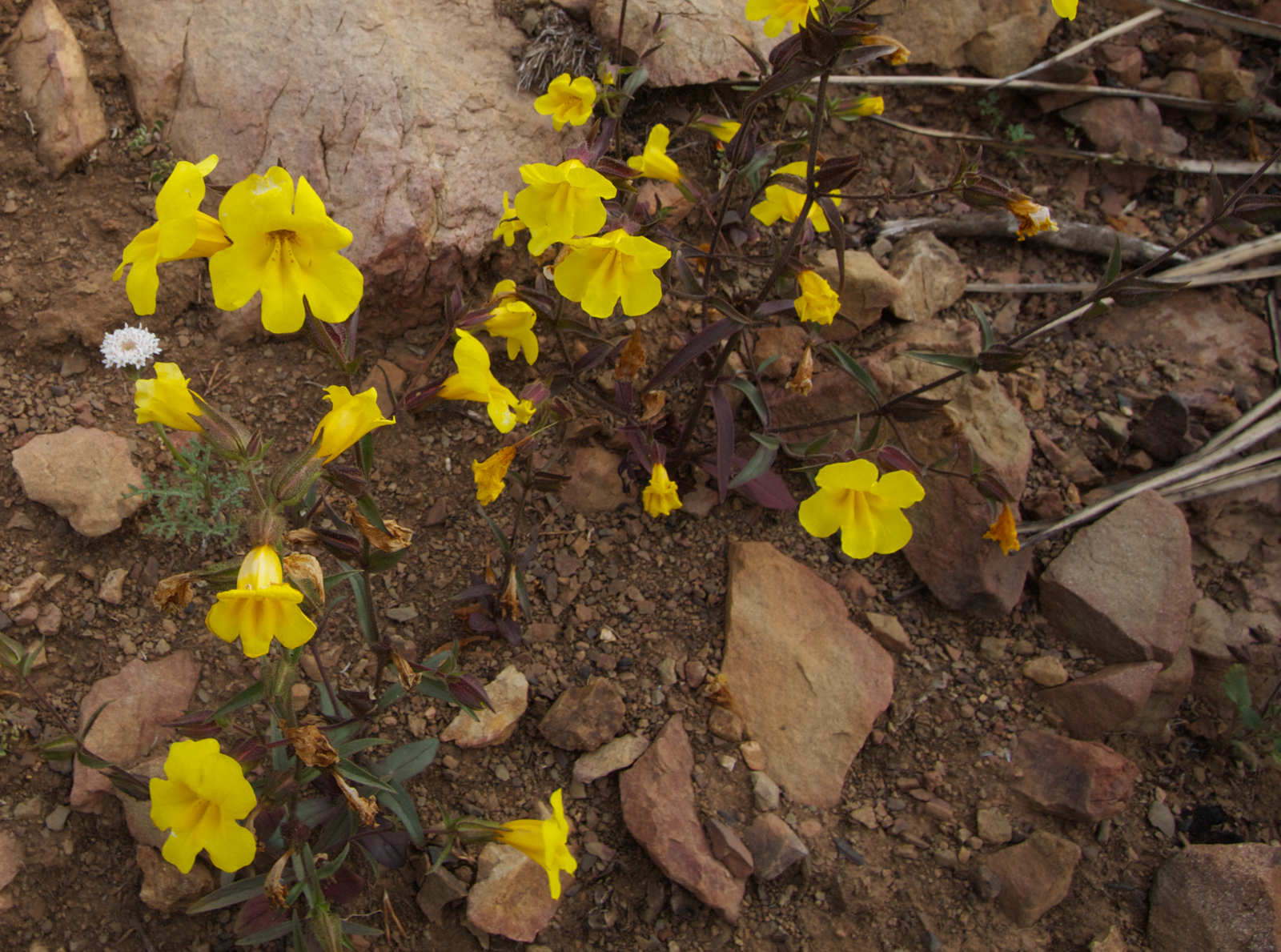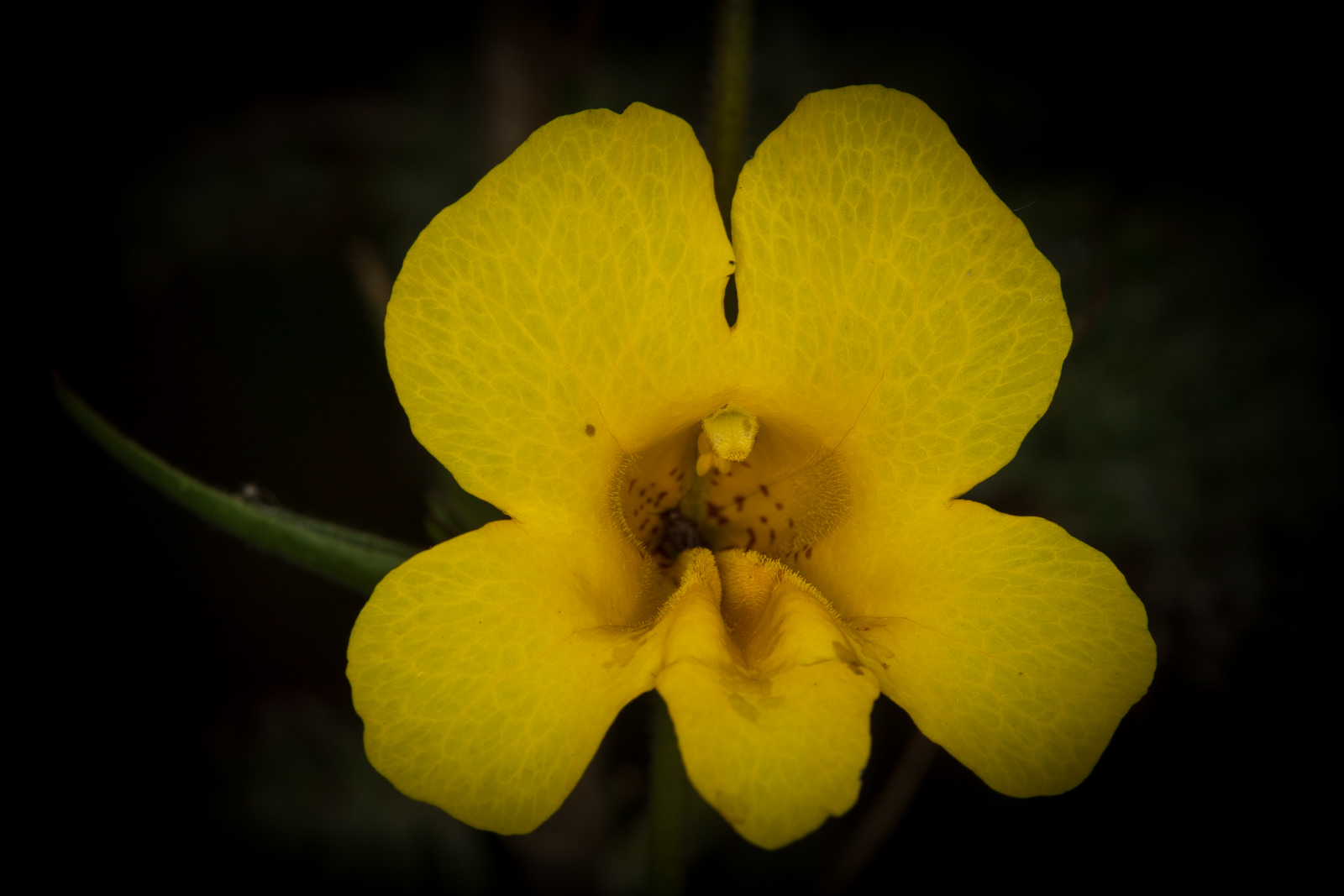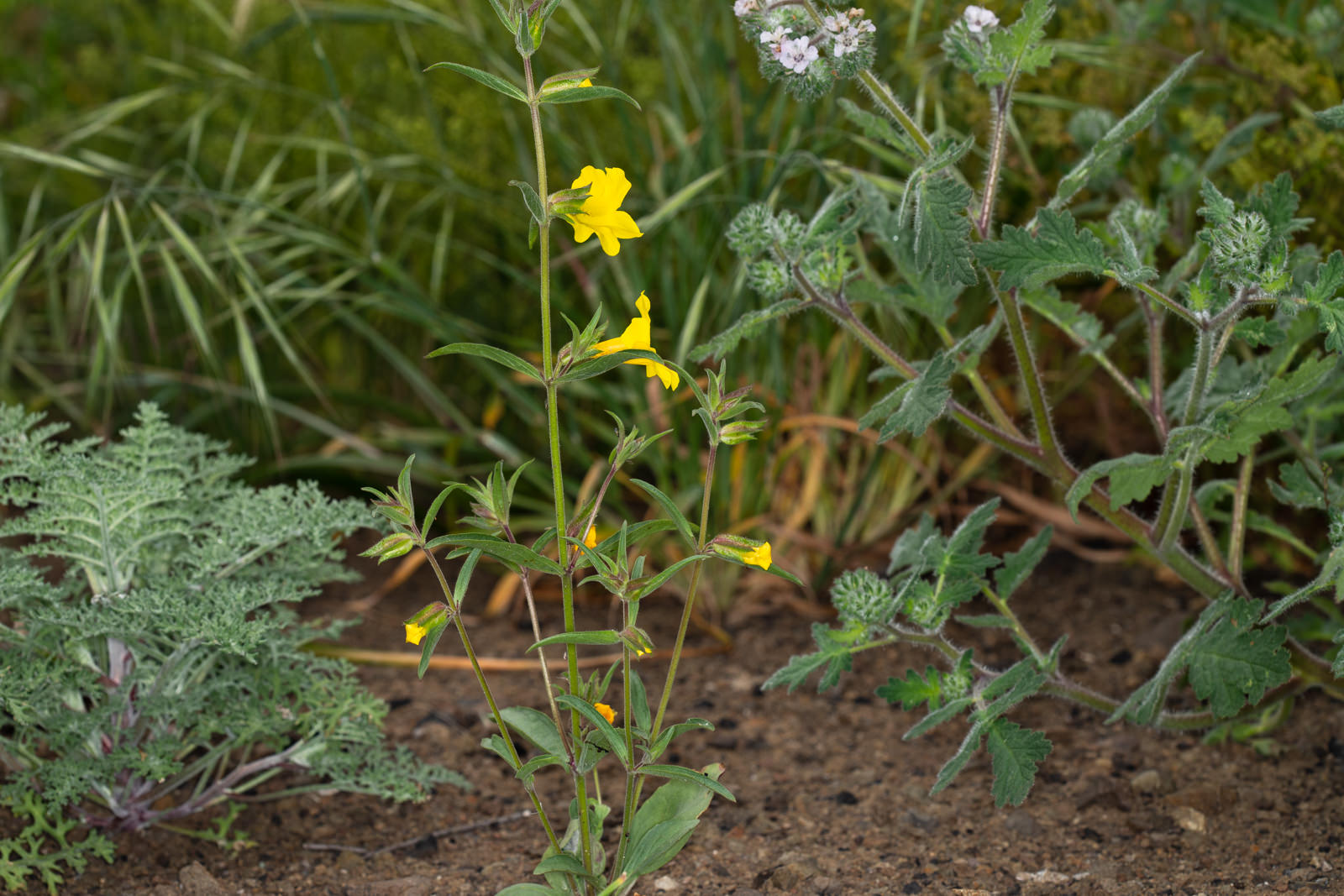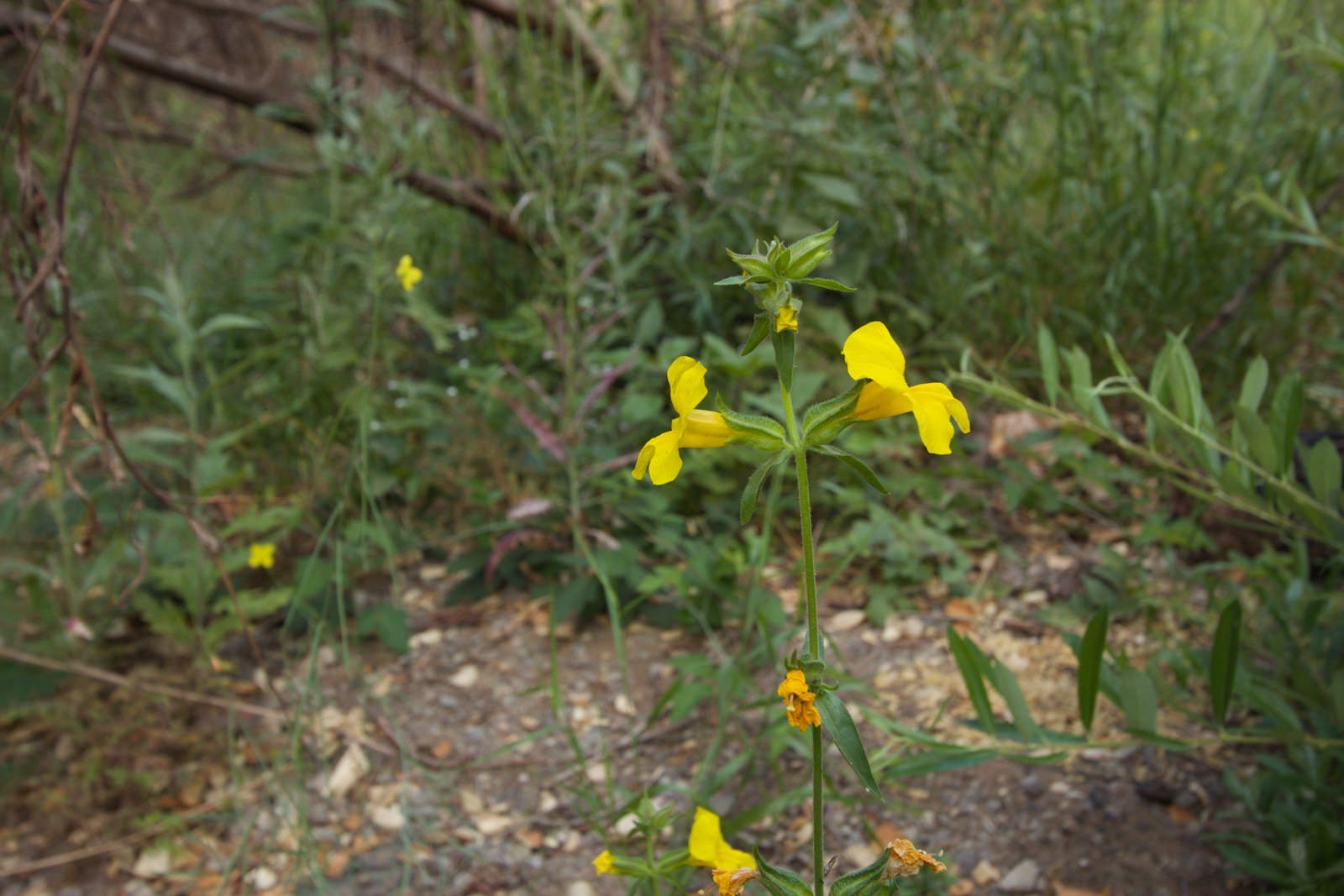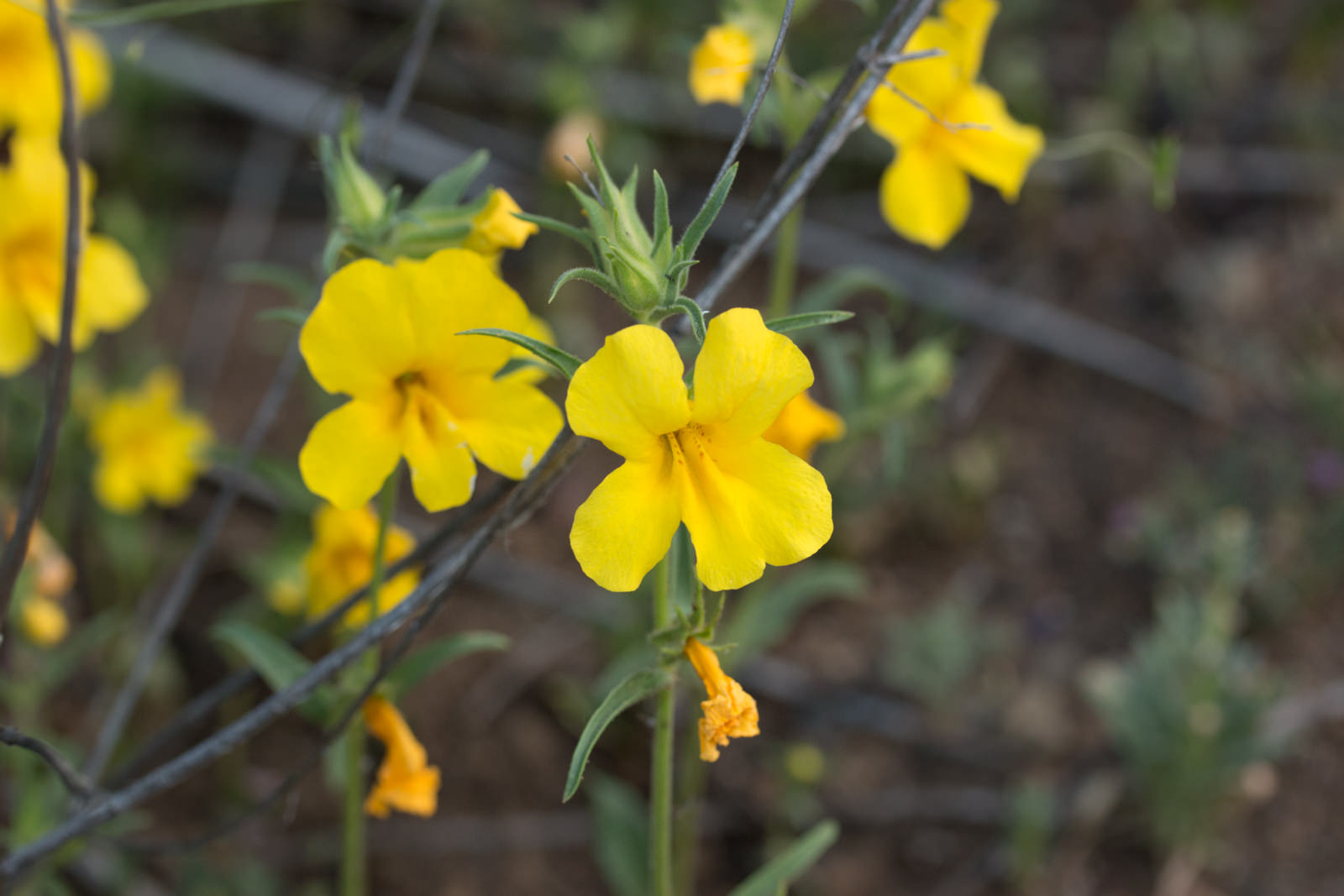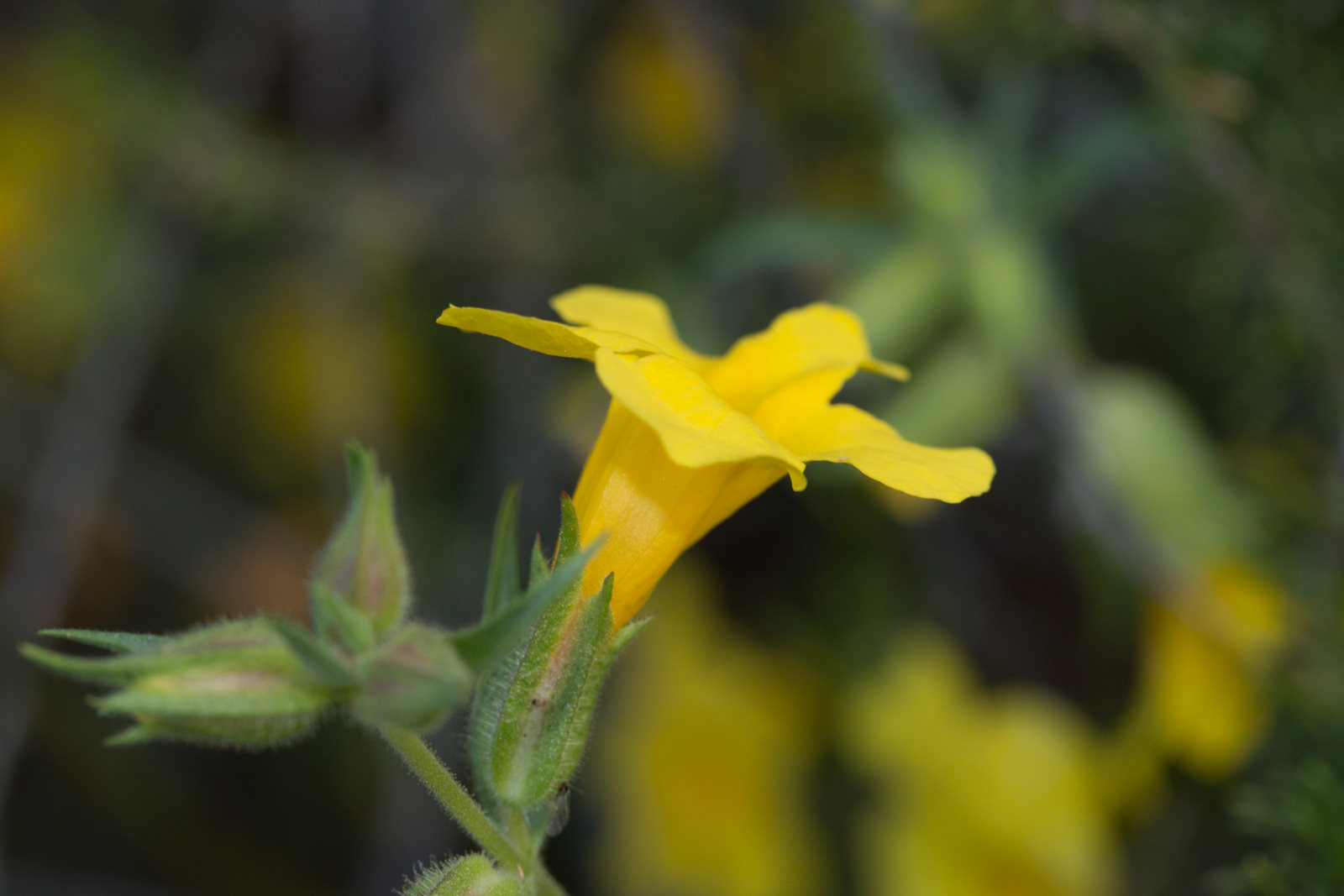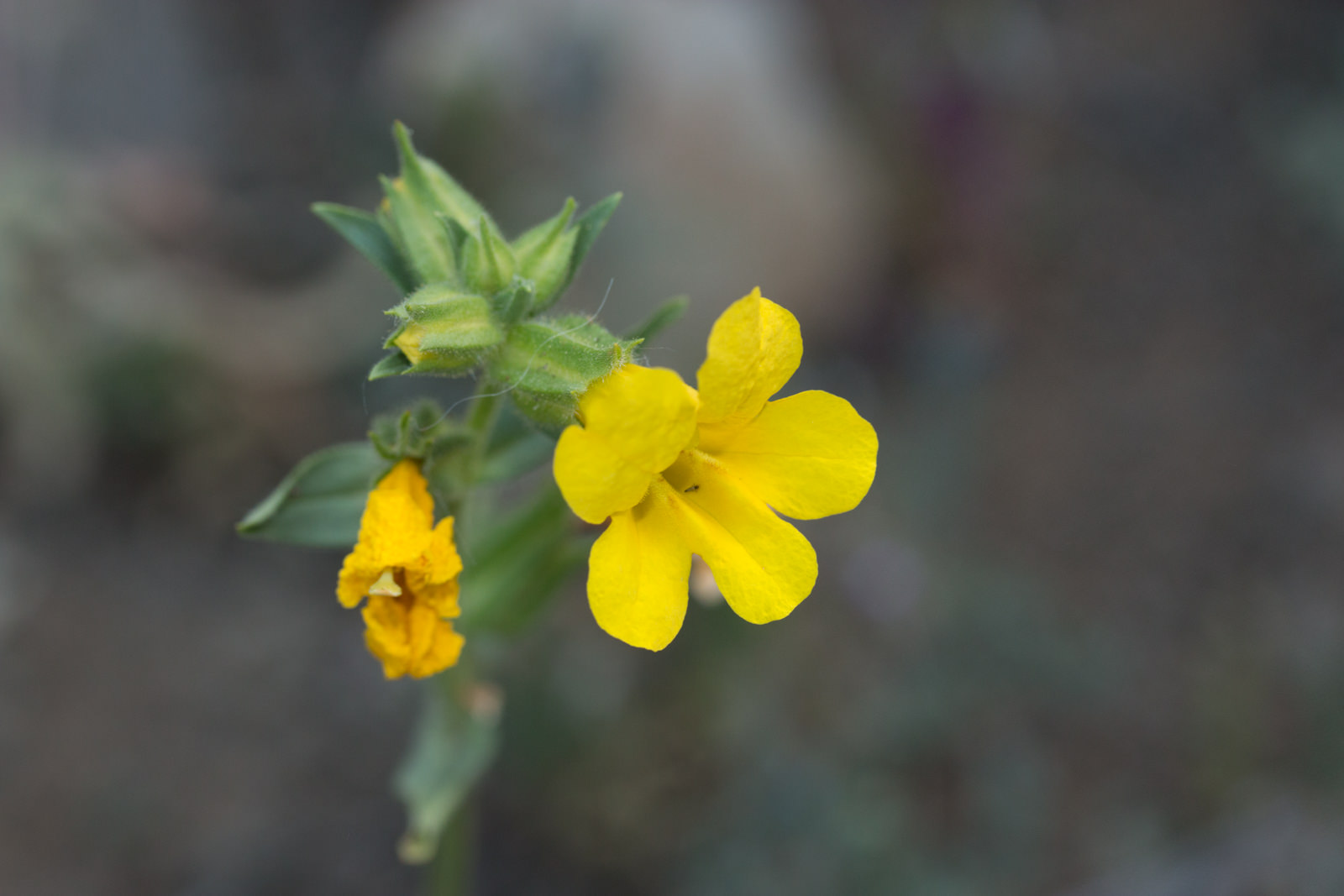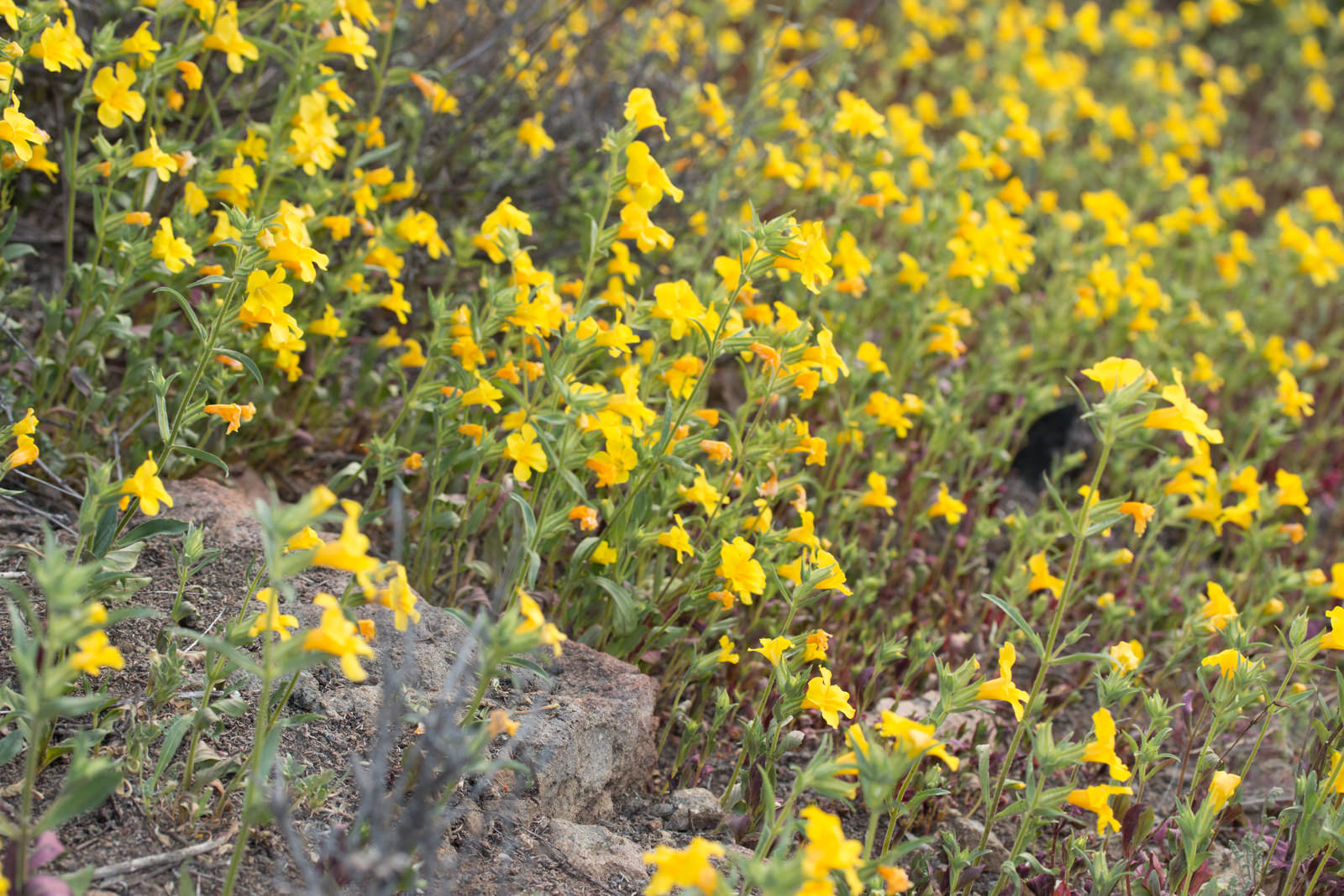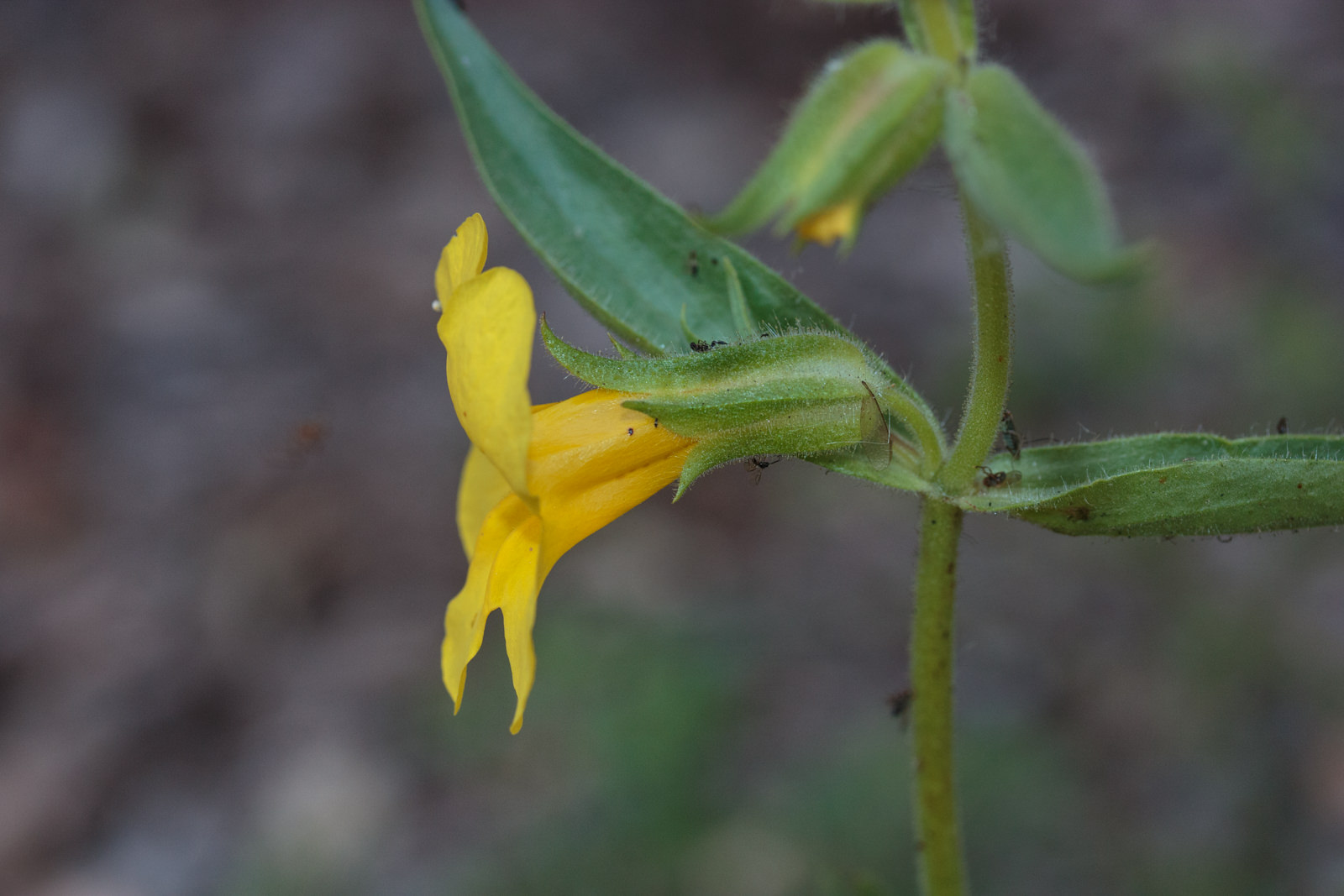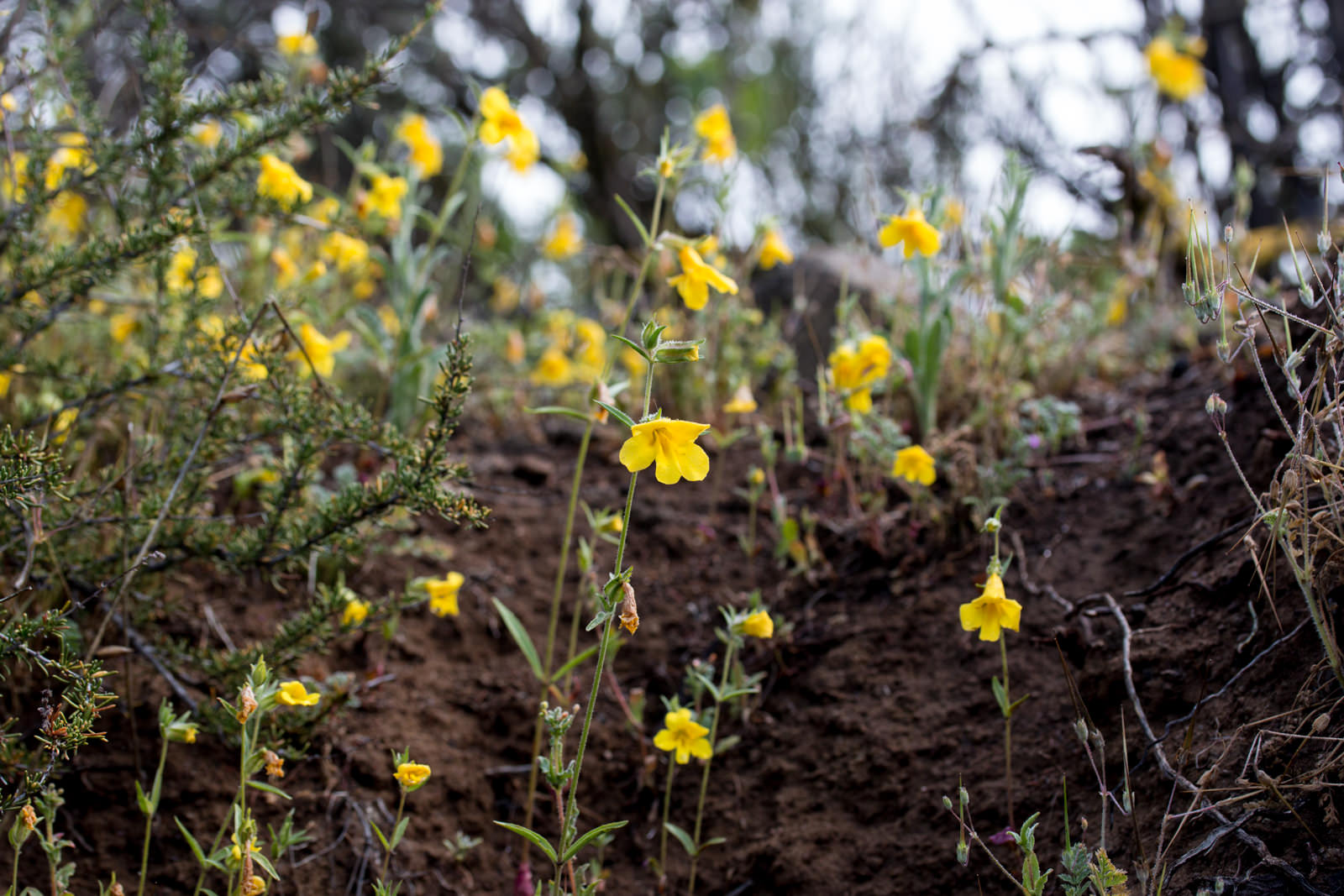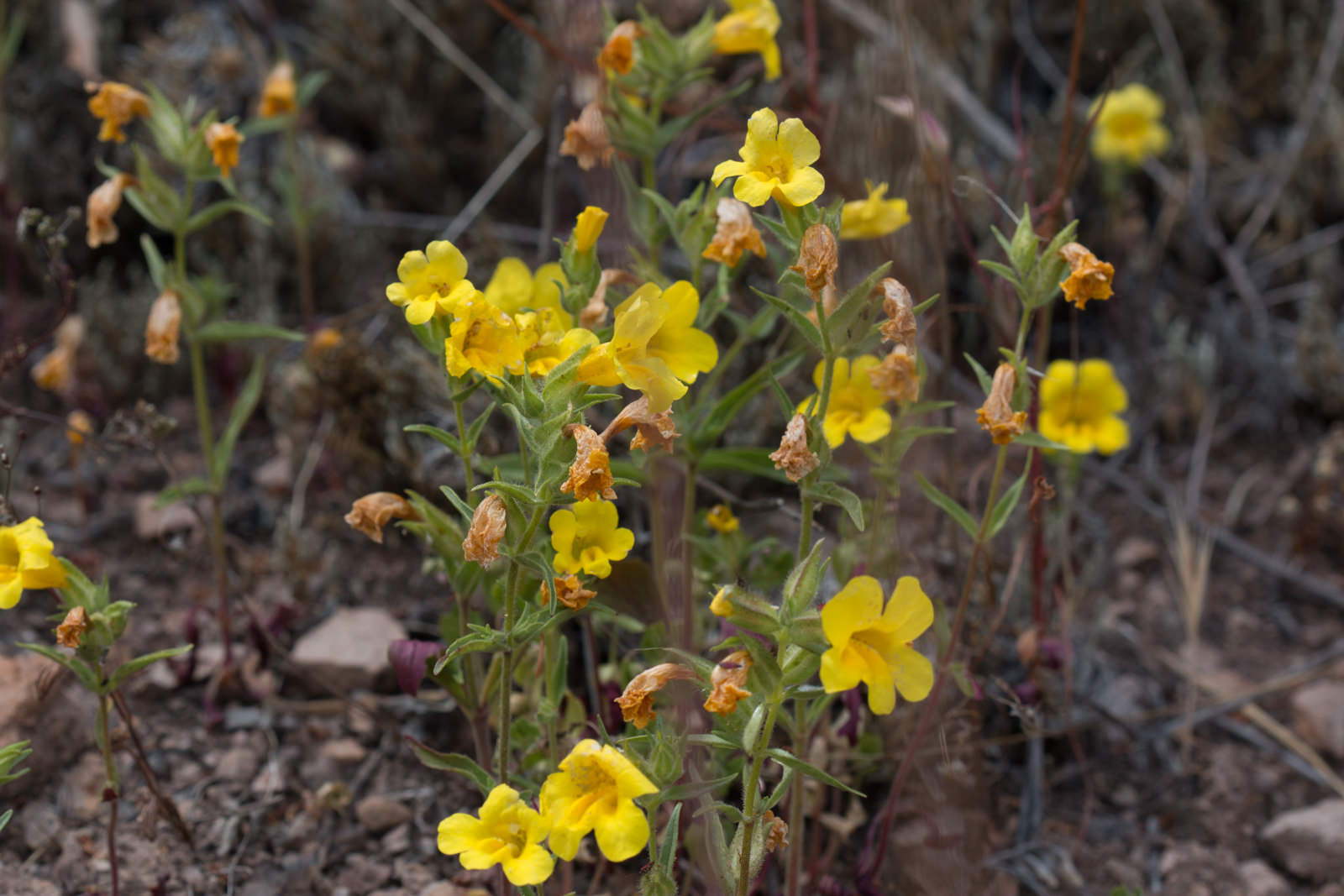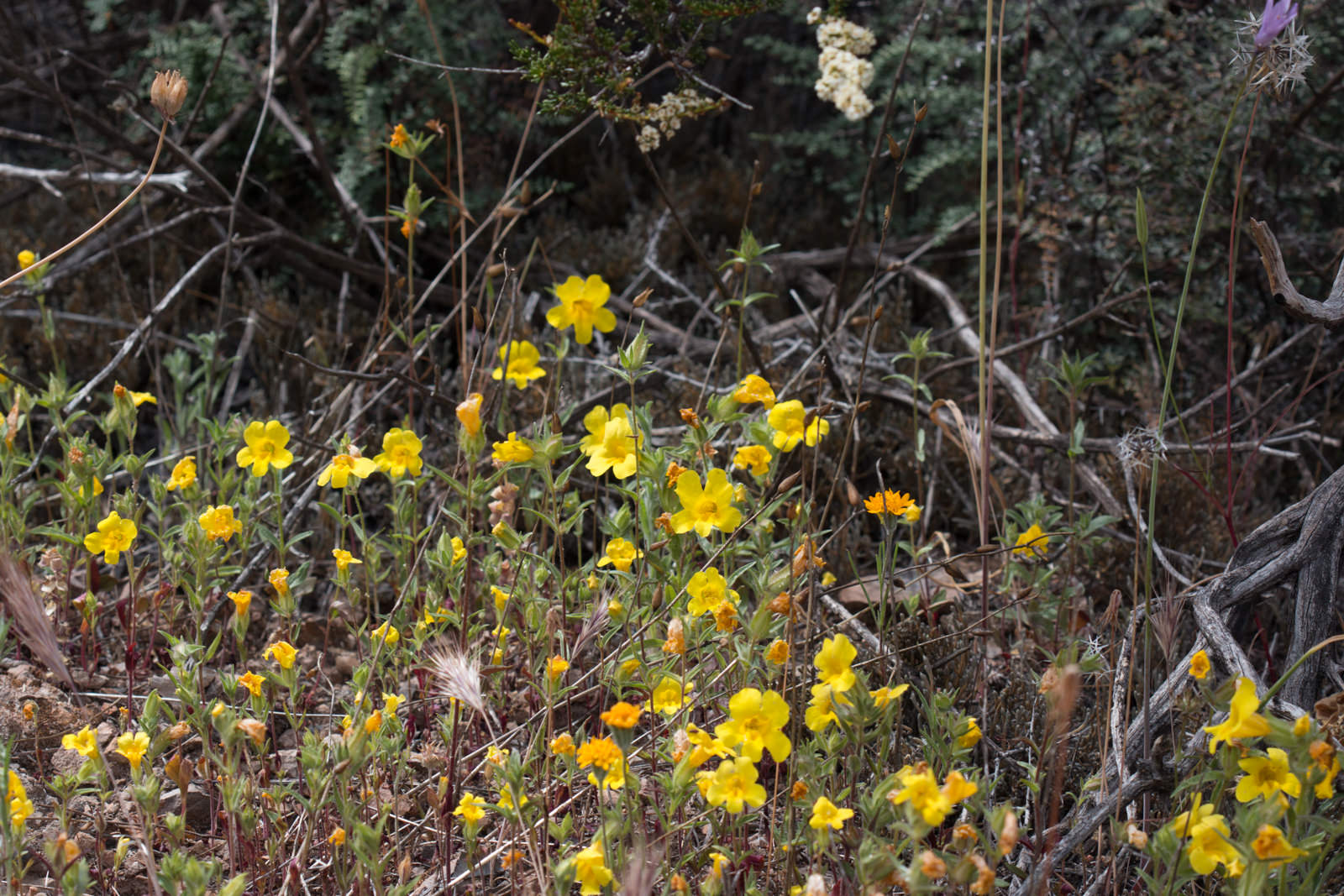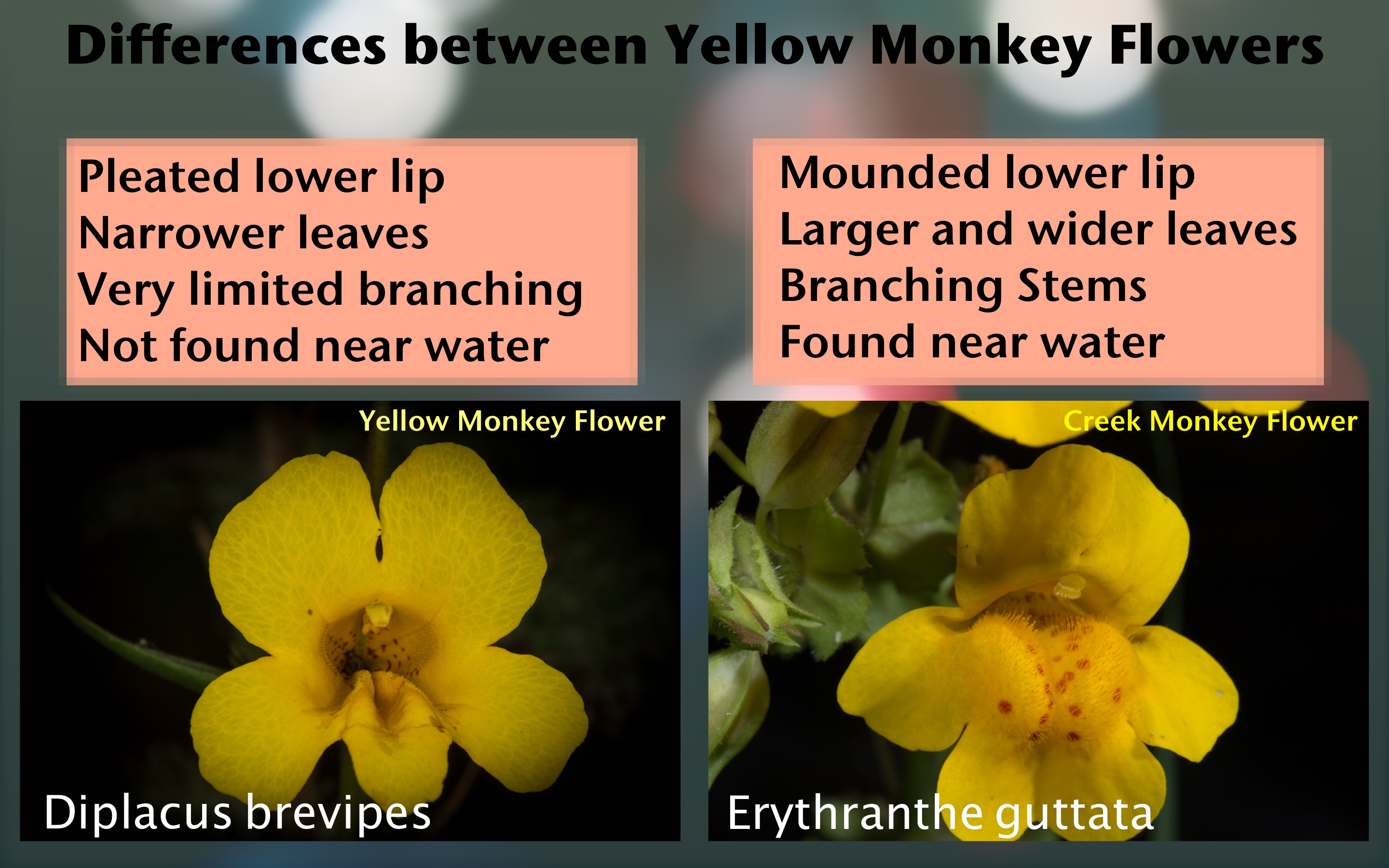Yellow Monkey Flower
- Diplacus brevipes
| Common Name(s): | Yellow Monkey Flower |
| Scientific Name: | Diplacus brevipes |
| Family: | Phrymaceae (Lopseed) |
| Plant Type: | Annual |
| Size: | up to 30 inches |
| Habitat: | Open Chaparral |
| Blooms: | April to July |
| Fire Response: | Germinate from Seed |
Commonly called Yellow Monkey Flower or Wide Mouthed Monkey Flower Diplacus brevipes was once known as Mimulus brevipes. This annual herb is native to California occurring in the Transverse (this includes the Santa Monica Mountains ) and Peninsular Ranges and other mountains and foothills of southern California and Baja California. Diplacus brevipes grows in chaparral, especially open areas such as those recently cleared by wildfire. It is always a pleasure to see this bright cheery lemon yellow flower trailside. You would not be the first to think this was the same Monkey flower you saw near the creek but close examination reveals that each species has made adaptations to prosper in their chosen niches. w
Flowers contain five petals fused into a two-lipped corolla with two petals up and three below which and thus symmetrical bilaterally. The plant grows on a vertical stem reaching maximum heights anywhere between 3 and 30 inches. The tubular throat of the flower is encapsulated in a hairy calyx of sepals up to one inch in length with pointed tips, some longer than others. The bright yellow flower corolla is up to 1.3 inchess long with five lobes at the mouth, two on the upper lip and three on the lower. The corolla is 2-lipped (upper lip 2-lobed and lower lip 3-lobed), 3/4 to 2 in. long, with two ridges running towards the open throat; 4 stamens; 2 stigmas. The woolly calyx is 5-cleft, with green (or reddish) ridges with lighter spaces in between, and lower lobes shorter than the upper. Peak bloom period is April to June.
The paired opposite leaves are lance-shaped to oval and are up to 3 inches long. The lower ovate leaves are alternate on 2-3 inch long stems.
Monkeyflowers were once in the Mimulus genus. DNA studies in recent years have divided them between two genera, Diplacus and Erythranthe. Diplacus are characterized by flowers which are sessile (directly attached to the stalk) and have flowers that are persistent (remain attached) after flowering. Erythranthe have flowers with a pedicel (the stalk that connects the flower to the stem) longer than the calyx and which are deciduous (fall) shortly after flowering. Look at the soil around the base of the plant for flowers that have been shed.
Link to Calflora.net - the best source of this fascinating information.
Name Origin: Diplacus: from the Greek di, "two, double", and plax or plakos, "a flat round plate, tablet or broad surface." Thomas Nuttall's 1838 publication On Two New Genera of California Plants in which he named this genus says "The generic name alludes to the splitting of the capsule, attached to each valve of which is seen a large placenta, and under its edges are found the slender subulate seeds." brevipes: with a short stalk.
Contributed by George Sherman
Featured Plants in the Phrymaceae (Lopseed) Family:
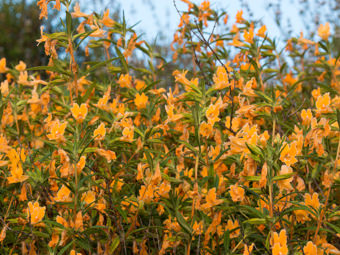
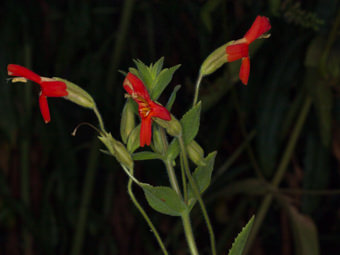
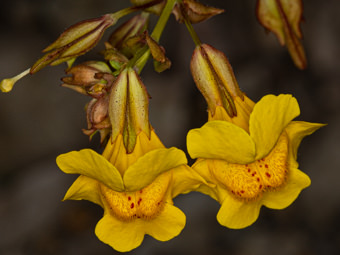
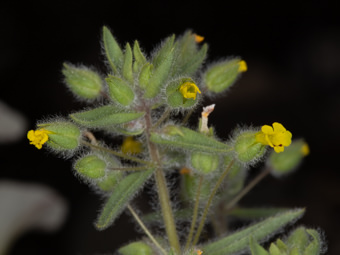
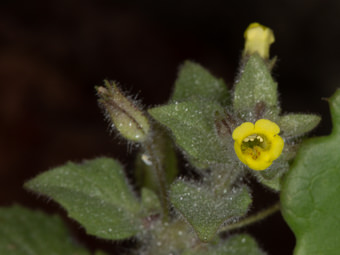
Last modified: August 21 2024 15:18:49.
Number of Images: 14
Image Size Total: 4,646,260
References:
Wildflowers of the Santa Monica Mountains, by Milt McAuleyFlowering Plants: The Santa Monica Mountains, Coastal and Chaparral Regions of Southern California, by Nancy Dale
Chumash Ethnobotany: Plant Knowledge Among the Chumash People, by Jan Timbrook
Leaf Shapes Primer - Botanical Terms for Leaves: - Link

